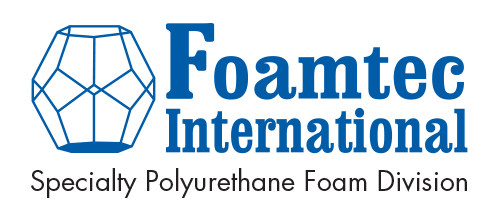The Science of Soundproofing
Foam stands out as a versatile and effective solution among the diverse materials employed in this endeavor. In this in-depth exploration, we unravel the science behind soundproofing with foam, understanding how it absorbs and blocks noise to create peaceful environments.
The Basics of Sound:
To comprehend how soundproofing works, one must first grasp the fundamentals of sound itself. Sound is a form of energy created by vibrations that travel through a medium, usually air. These vibrations produce waves that our ears perceive as sound. These waves can be reflected, absorbed, or transmitted through the material when they encounter a barrier.
How Foam Absorbs Sound:
Foam's remarkable ability to absorb sound lies in its structure and composition. Unlike hard surfaces that reflect sound waves, foam is an effective absorber due to its porous and open-cell structure. This structure allows sound waves to enter the foam, where they encounter resistance, leading to energy dissipation in the form of heat.
1. Porous Structure:
Whether polyurethane, melamine, or other types, foam features a porous structure with interconnected open cells. These open cells act as interconnected chambers that trap and dissipate sound waves as they travel through the material.
2. Internal Friction:
As sound waves enter the foam, they cause the air within the open cells to vibrate. This internal movement creates friction, converting sound energy into heat. The more porous the foam, the greater the internal friction, resulting in more effective sound absorption.
3. Frequency Specific:
Different foam materials and structures are tailored to absorb specific frequencies of sound. For instance, melamine foam is particularly effective at absorbing high-frequency sounds, making it suitable for applications where machinery or equipment noise must be mitigated.
Foam as a Sound Barrier:
While foam excels in absorbing sound, it also plays a crucial role in blocking sound transmission, making it an excellent material for soundproofing applications.
1. Density Matters:
The density of foam is a key factor in its sound-blocking capabilities. Higher-density foams are more effective at blocking low-frequency sounds, such as those produced by traffic or heavy machinery. In contrast, lower-density foams are better at handling higher-frequency sounds.
2. Multiple Layers for Better Blocking:
Creating an effective sound barrier involves strategically using multiple layers of foam. This layering approach helps disrupt and reflect sound waves, preventing them from passing through the material. It's a technique commonly used in constructing soundproof walls or enclosures.
3. Decoupling for Enhanced Performance:
Foam can be used in conjunction with decoupling techniques to enhance soundproofing further. Decoupling involves creating a gap between surfaces to prevent the direct transfer of vibrations. Foam pads or spacers can be strategically placed to interrupt sound transmission through structural elements.
Applications of Soundproofing Foam:
The versatility of soundproofing foam makes it an invaluable asset across various industries and environments. Here are some notable applications:
1. Architectural Acoustics:
In architectural design, foam is employed to mitigate echoes, reverberation, and unwanted noise in spaces such as auditoriums, theaters, and recording studios. Acoustic panels, often made of foam, are strategically placed to absorb and control sound reflections.
2. Industrial Settings:
Factories and industrial facilities can be noisy environments due to machinery and equipment. Foam is used to line walls and enclosures, providing a barrier against noise transmission and creating a safer and more comfortable working environment.
3. Residential Soundproofing:
In homes and apartments, foam is used for soundproofing walls, floors, and ceilings to reduce noise transfer between rooms. It's especially useful in bedrooms, home theaters, and other spaces that desire peace and quiet.
4. Automotive Insulation:
Foam is a common component in automotive insulation, reducing road and engine noise inside vehicles. It is a barrier to external sounds and enhances the overall comfort of the driving experience.
5. Commercial Spaces:
Open office layouts and commercial spaces can benefit from the sound-absorbing properties of foam. Businesses can create more pleasant and productive environments by strategically placing acoustic panels or incorporating foam into furniture and fixtures.
Innovations in Foam Technology:
As the demand for effective soundproofing solutions grows, researchers and manufacturers continue to push the boundaries of foam technology. Recent innovations include the development of advanced foam formulations that target specific frequency ranges, providing even more tailored solutions for diverse applications.
Smart Foam:
Integrating technology into foam materials has led to "smart foam." These innovative materials can adapt their properties in response to temperature, humidity, or sound frequency changes, offering dynamic and responsive soundproofing solutions.
As technology advances and our understanding of acoustics deepens, we expect even more sophisticated and effective foam-based solutions to redefine how we experience sound in our environments. Foam's journey from a humble material to a key player in the science of soundproofing is a testament to human ingenuity and the enduring quest for peace in a noisy world.

